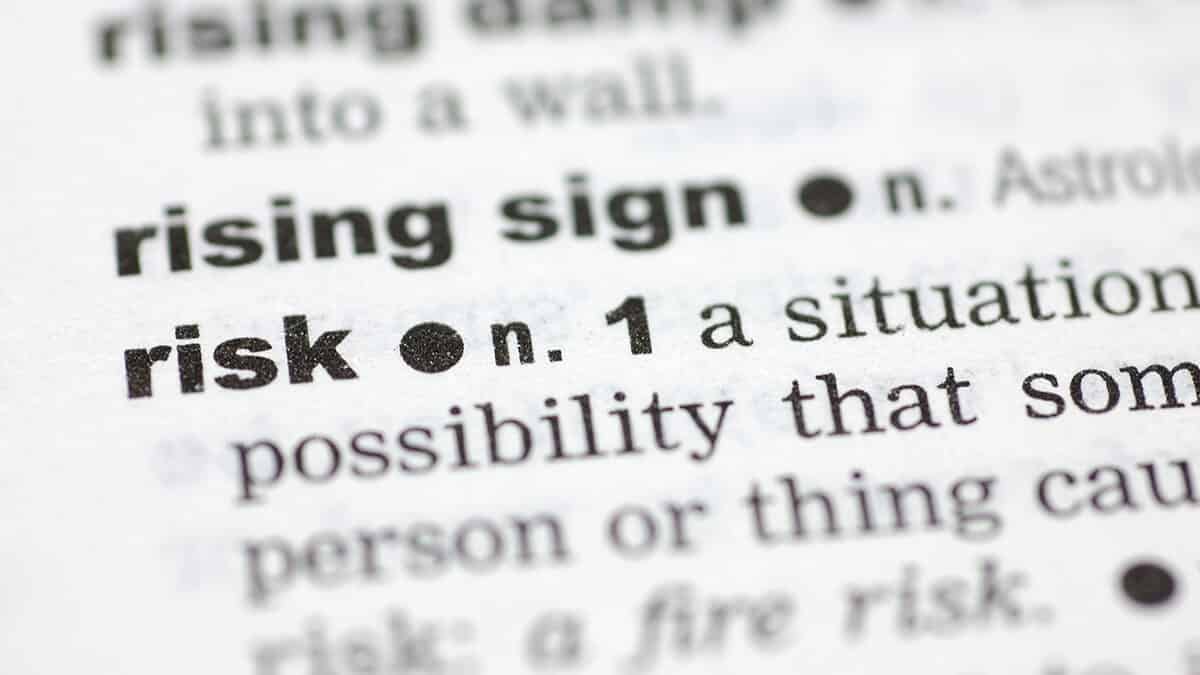In this guide
Choosing investments with the potential to earn high returns sounds like a no-brainer, until you consider the risks.
All investments carry risk. Deciding on the level and type of risk you’re comfortable with is one of the fundamental steps to ensuring your super is working hard to produce the returns you need to fund your retirement, while also giving you the confidence to stick with your strategy through varying market conditions.
You might already have an idea of your personal tolerance for risk but perhaps you’re not entirely sure of where your partner sits on the risk spectrum. Either way, it’s a good idea to get a clear understanding of your individual and/or combined risk appetite and how that fits in with the range of investment options available when it comes to your super.
Re-thinking risk
The first step to understanding your risk profile and taking control of your investment choice is to carefully consider the risks you are exposed to.
Investment risk is often described as a simple spectrum, with stable assets like cash and fixed interest carrying less risk, and more volatile assets like property and shares carrying more. This picture is accurate when you’re thinking about the risk of short-term loss, but the trade-off is that the more volatile assets provide a higher return in the long term.
When making investment decisions it is critical to consider the whole picture. If you invested solely in ‘secure’ assets you would be very unlikely to suffer significant investment losses, but your investment would grow slowly. This increases the risk that your assets will not grow quickly enough to keep up with inflation (known as inflation risk) and the chance that your assets will not be sufficient to last for life after retirement (longevity risk).
On the other hand, if you invested solely in shares, property and alternative investments, your portfolio would have a high chance of losing value in any one year, but the expected return after a long period would be significantly higher. Both inflation risk and longevity risk would be lower than a ‘secure’ portfolio.
Particularly when it comes to super, the risk that your balance doesn’t grow enough can be more important than the risk of making a loss in the short term. Super is, by nature, a long-term investment – for most of us it’s locked away until at least age 60 and then expected to provide income for life after retirement.
Because of the influence of time, the type of risk you’re happy to accept for your super may be very different from other investments.
For example, if you want to save a deposit to purchase a home in four years’ time, you’re probably not willing to risk an investment loss that may take years to recover from. However, if you’re considering super that you’re not planning to access for another 20 years, a loss this year is less important. You may be more than happy to accept that risk in exchange for a higher return in the long run, knowing your balance has time to recover losses and go on to reach new highs.
Learn more about the investment risks that can affect your super.
The Standard Risk Measure
Since June 2012, on the instigation of APRA, super funds have been required to include a risk rating for all their investment options. Called the Standard Risk Measure, the aim is to provide members with a simple but consistent means of comparing the risk of different investment options, both within and across super funds.
Risk is measured according to the likely number of negative annual returns over a 20-year period. The lower the number of estimated negative returns, the lower the score on a rating of 1 to 7.
For example, an investment option that fund trustees estimate is likely to produce a negative return less than 0.5 times in 20 years would be in risk band 1, while an investment option likely to produce a negative return less than one year in 20 but more than 0.5 times would be in risk band 2, and so on. You can see all seven risk bands with their estimated negative years in 20 outlined in the table below.
Standard Risk Measure
| Risk band | Risk label | Estimated number of negative annual returns over a 20-year period |
|---|---|---|
| 1 | Very low | Less than 0.5 |
| 2 | Low | 0.5 to less than 1 |
| 3 | Low to medium | 1 to less than 2 |
| 4 | Medium | 2 to less than 3 |
| 5 | Medium to high | 3 to less than 4 |
| 6 | High | 4 to less than 6 |
| 7 | Very high | 6 or greater |
Source: APRA
You can find the risk rating of investment options on your fund’s website, along with other details such as performance targets, actual past performance over different time periods, and asset allocation.
For MySuper options, the information is clearly set out on a single page called the MySuper dashboard, also available on your fund’s website.
Limitations of the Standard Risk Measure
SuperRatings executive director Kirby Rappell says that although the Standard Risk Measure gives the end user a relatively simple way to understand how risky an option may be, there are a couple of challenges with the measure.
“It doesn’t explain how large the negative return may be; a 2% fall or a 20% fall are quite different experiences in an investor’s mind. Secondly, there can be variations in the assumptions used by providers when calculating risk scores,” he says.
The Standard Risk Measure may also be undermined by a lack of consistency in the labels that funds give their investment options. For example, UniSuper’s Balanced option is in risk band 6, indicating high risk. While over at QSuper, its Balanced option is in risk band 4, or medium risk, which is probably closer to the level of risk members might assume from a balanced asset mix.
For more on this debate, see article Balanced, Growth, Defensive: What’s in a name?
Risk profile quiz
Make your super work harder
- Discover best performing super funds
- Tips and strategies to boost your retirement savings
- Calculators give you power to plan
- Step-by-step guides help you put plans into action



Leave a Reply
You must be logged in to post a comment.